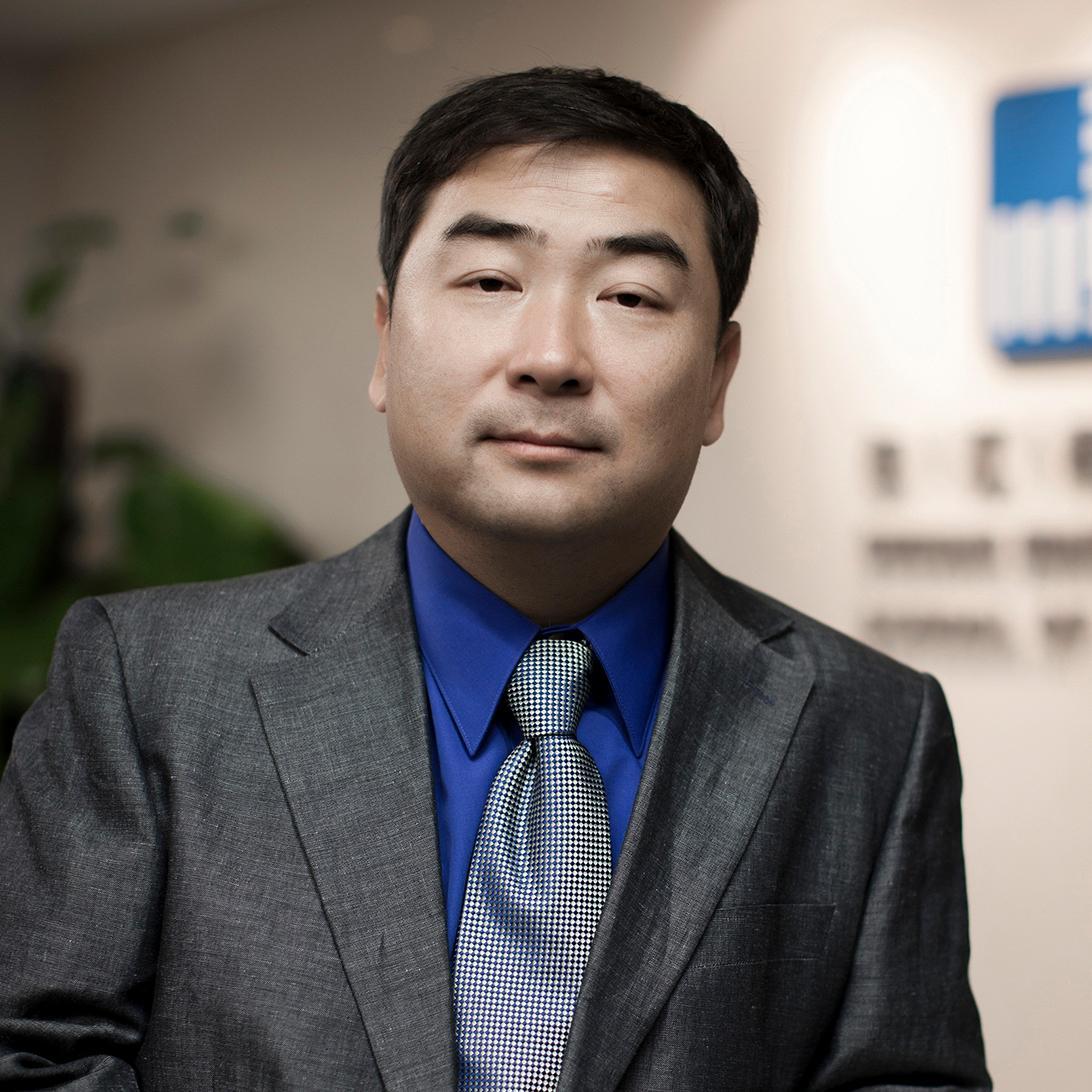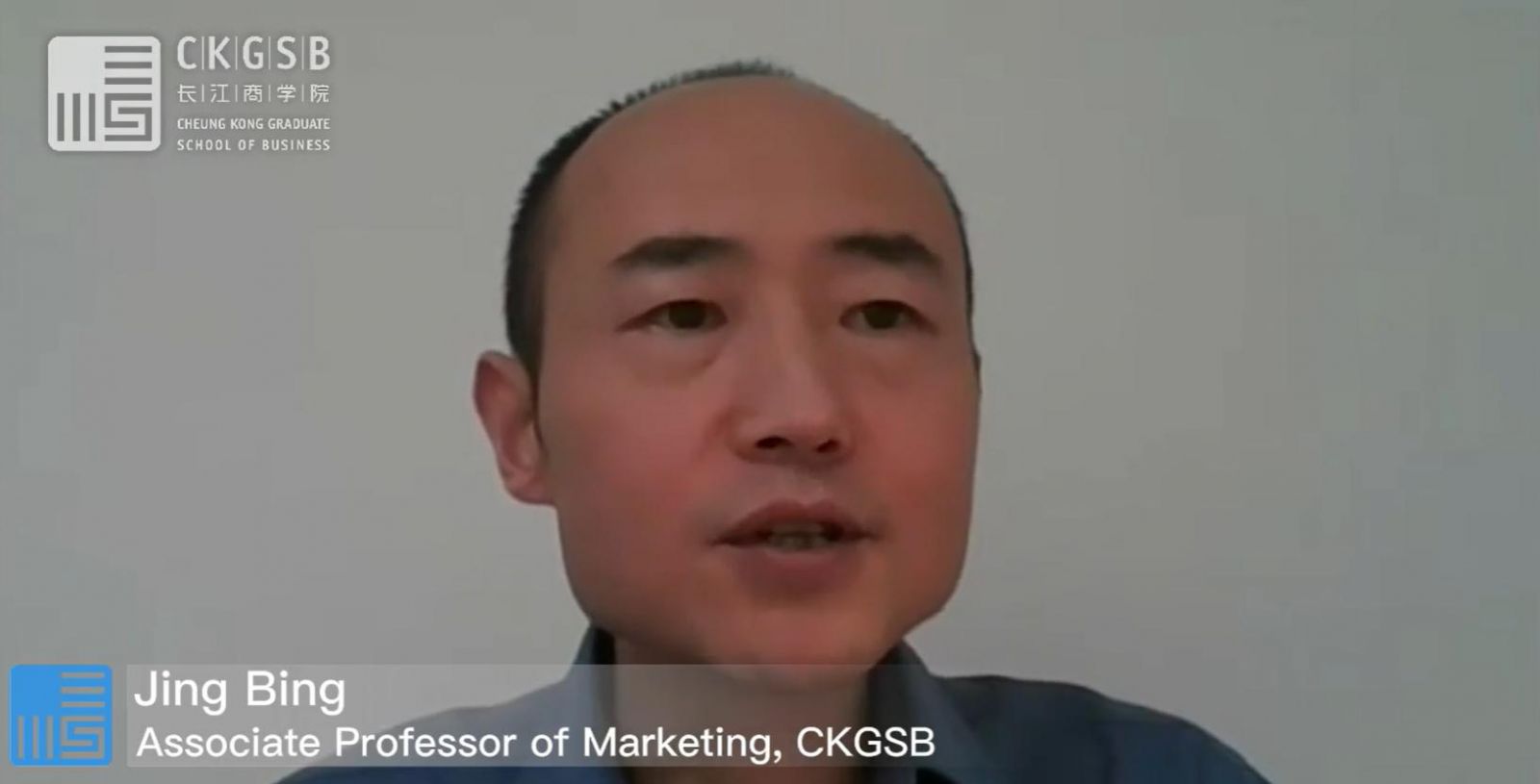To protest a government plan to admit more students to medical schools, a majority of medical interns and resident doctors have been walking off their jobs in South Korea, where the structural issues derived from the healthcare system are exposed intensively. Behind this it is believed that those doctors might go for their own interests, or medical resources are getting scarce along with population aging and dropping fertility rate. Uneven distribution of medical resources cannot be solved sorely by increasing the number of doctors.
Looking globally, South Korea is top ranked globally in terms of medical services. It is of course far from enough to be with sophisticated technologies, medicine and medical expertise in building an efficient modern-day healthcare system.
At the heart of the healthcare system is people’s health. Yet due to its complexity, information asymmetry and non-transparency, people are often left at a loss. Due to scarcity and distribution inefficiency of medical resources, traditional medical services cannot efficiently match medical resources to patients’ needs. This is what we can learn from the strike by doctors in South Korea. It is pressing to firstly solve the information-related issues in the healthcare system.
Information asymmetry
Information asymmetry is inherent in the specialized medical world. Medical institutions have an edge over patients and insurance companies in the aspect of information, and they can therefore capitalize on patients and swindle medical insurance. In fact, this is prevailing in the worldwide healthcare system.
There is a huge asymmetry in information between medical institutions and patients. Medical institutions and doctors have expertise and this puts patients at a disadvantage when choosing diagnosis and treatment schemes. They might recommend unnecessary medical examinations, surgeries or drugs in an attempt to make money from them. Patients often can hardly tell whether these schemes are reasonable, and they have to follow doctor’s advice.
The Lancet reported the overuse and underuse of medicine and medical services around the world. Up to 70% of hysterectomies in the US, a quarter of knee replacements in Spain and more than half the antibiotics prescribed in China are inappropriate, overused healthcare. This has caused avoidable harm to patients and moreover wasted precious medical resources.
Information asymmetry also exists between medical institutions and insurance companies. Medical institutions and doctors are clear about patients’ conditions and treatment schemes, whereas insurance companies usually rely on the information provided by medical institutions when evaluating compensation.
To gain a higher amount of insurance compensation, medical institutions might overstate or even fabricate patients’ conditions and treatment expenses. Further, insurance companies are unable to verify the truthfulness of the diagnosis and treatment information provided by medical institutions, and they are likely to deceive patients with these institutions, causing high frequency of over-treatment and healthcare fraud.
An AMA survey of more than 2,000 doctors shows that 20.6% of medical services are unnecessary. The 2018 National Money Laundering Risk Assessment found that healthcare fraud was the largest source of illicit funds in the US, with over $110 billion in proceeds generated each year. Healthcare fraud accounts for one-third of all illicit proceeds laundered in the US.
Over-treatment and healthcare fraud also prevail in the UK, Canada, Australia and China, imposing heavy burden on global healthcare system. Whether it is market-oriented or public-oriented, the healthcare system is characterized by information asymmetry. Healthcare costs and expenses are intricate in structure, and this will inevitably make healthcare price and quality non-transparent and hard for patients to understand, and healthcare insurance hence cannot be verified. Without stringent supervision, medical institutions and doctors could likely seek private gains by use of information asymmetry, causing waste of resources and corruption.
The US has one of the highest costs of healthcare in the world, about 20% of GDP each year. Healthcare services are provided and paid mainly by private medical institutions and insurance companies. Behind the high healthcare costs are the non-transparency of medical service prices.
According to a price survey of 53 US hospitals, the average price of heart bypass surgery offered by them is $150,000, ranging from $44,000 to $448,000. Similarly, payments by the elderly with US government-funded health insurance are often reasonable, but commercially insured patients may pay two to twenty-three times more than that for the same treatment. It is evident that the non-transparency of medical prices has made medical costs highly controllable and eventually caused overstaffing in the US healthcare system.
With public medical institutions dominant in China, non-transparency of medical prices promises rent-seeking possibilities within medical institutions. Particularly in terms of the purchase and use of drugs, consumables and devices, medical institutions know more about the efficacy and value of products than patients and healthcare insurance funds, and they could likely go for private gains in the purchase process or use costly profitable drugs and consumables for diagnosis and treatment.
As reported by the Central Commission for Discipline Inspection and National Supervisory Commission, a linear accelerator with an import price of RMB 15 million was sold to a hospital at RMB 35.2 million, and the president got RMB 16 million from it. As the chief leader, the president has the right to make decisions, and middle managers like department heads also play a pivotal role in the evaluation and use of drugs and medical devices. They all fall prey to the bribers. Additionally, low-tier practitioners might take risks to get illegal proceeds. Primary doctors, for example, get kickbacks from pharmaceutical companies for prescribing specific drugs.
Mandatory information disclosure is the key
Mandatory information disclosure is the key to addressing information asymmetry in the medical field, i.e. to make medical information known in the public domain as much as possible and supervise hospitals like listed companies.
Singapore’s healthcare system is known globally for its incorruption, as the medical information is highly transparent and information asymmetry is solved by ensuring transparency of medical prices and treatment effects. In Singapore, drug prices are transparent with fewer intermediate procedures, and there are almost no markups during circulation. All public hospitals are required to bid for medical devices and drugs through a unified procurement portal. The prices are determined through market bidding, whereby suppliers can compete with each other fairly without covert deals. In the circulation process, the government cuts down on circulation costs and requires all public hospitals to adopt zero markup drug policy, not allowing them to make profits from drugs. In this way patients can buy drugs at the cost price.
The Pharmaceutical Society of Singapore announced the price list and subsidies of the drugs required for chronic diseases, so that patients can make reasonable choices when seeking for doctor’s advice. In this way Singapore has achieved separation of prescribing and dispensing and guaranteed transparency of drug prices, thereby preventing rent-seeking. The medical service costs and treatment effects are also transparent in order to promote fair competition among hospitals and improve the quality and efficiency of medical services.
As early as 2004, the Singapore Ministry of Health (MOH) began to announce medical service fees of all public hospitals, so that people can compare the costs across hospitals. From then on, hospitals scrambled to lower their fees. The fees of LASIK, for example, dropped by S$1,000.
In 2006, the MOH further requested hospitals to announce clinical treatment effects of major diseases. Take cataract surgery, for example: the success rate of surgery was then very similar across hospitals (all reaching 95% or so), but the fees were quite different. After announcement of treatment effects, hospital fees trended to an equilibrium point.
In 2018, the MOH released the benchmarks for common surgery fees for private hospitals’ reference, with the aim of prohibiting a surge in healthcare fees. Since then, the MOH has released the benchmarks for common treatment fees in public and private hospitals, including surgery fees, anesthesia fees, medical facilities and equipment, and medical consultation fees, with most treatment scenarios being covered.
In this way, Singapore has greatly mitigated the impact of information asymmetry, and patients are therefore able to be well aware of the treatment fees and effects. Besides this, hospitals are forced to deliver higher quality medical services at lower costs and better effects so as to remain competitive.
In Singapore, both hospitals and governments have dedicated procedures in place to check erroneous ideas at the outset. In a hospital, a dedicated pharmacy and drug therapy team is set up to monitor the dosage and safety of drugs prescribed to avoid overdose of drugs. This team can comprise doctors, pharmacists, head nurses and administrators from different departments. The MOH has set up the Singapore Medical Council (SMC) to maintain the register of medical practitioners and govern their qualifications, thus cracking down on indiscriminate prescribing.
With a well-established law system, the anti-corruption law is oriented towards private institutions rather than public ones as previously, and doctors who receive kickbacks or charged too much will be subject to harsh punishment. Dr. Lim, a famous doctor in Singapore, was investigated by MOH for billing a member of the Brunei royal family S$25.2 million for breast cancer treatment. She was accused of 94 overcharges and suspended from practice for three years.
Singapore’s healthcare system thrives on transparency. With integrated approaches of mass supervision, hospital autonomy, and legislative regulation, all healthcare costs are made public and easily accessible online, as well as being affordable and catering to diverse market needs. Those inspiring initiatives have radically cracked down on rent-seeking, corruption and resource wasting as a result of medical information asymmetry.
Information search for healthcare
Another significant challenge is doctor-patient matching. Patients have different healthcare needs depending on their conditions. Similarly, different doctors have different titles, experience and expertise. Patients should look for the right doctor for themselves, with the non-critical to see a general doctor, and the critical to see a veteran doctor. Medical services and patient needs can thereby be clearly matched with fewer resources wasted, and meantime patients will feel more satisfied.
There are two ways to increase doctor-patient matching efficiency. First, implement strict hierarchical diagnosis and treatment system. Primary clinics should be able to cure patients with common and chronic diseases, and those with other kind of diseases should be referred to general or specialized hospitals. Good healthcare order can be achieved thereby. Second, enable precise matching of patients and doctors with the help of information technology. By means of online diagnosis and treatment, as well as internet hospitals, patient needs can be well satisfied. Also, this will drain population from large-sized hospitals, and offer healthcare access to patients in remote areas.
Hierarchical diagnosis and treatment system has already been well-established in developed countries like the UK and the US, where healthcare systems are kept in good order, with the system of initial visit at primary medical institutions and the bidirectional referral system are implemented side by side.
In the UK, there are three levels of healthcare: primary, secondary, and tertiary. Primary care providers are typically local general clinics which provide such basic healthcare services as daily health management, common and chronic disease diagnosis and treatment, and rehabilitation. Secondary and tertiary healthcare service providers are general hospitals which deal with serious and stubborn diseases as well as emergency cases, and there are no general outpatient services but only specialized outpatient services along with inpatient care.
Unless in an emergency, patients must seek treatment firstly at general clinics. If their diseases are deemed serious, they are referred upward by general physicians to higher-grade hospitals for specialist treatment, or otherwise they will be unable to make an insurance payment. After treatment in a general hospital, patients can be referred back to the general clinic for rehabilitation as the case requires. For hierarchic diagnosis and treatment, patients can be referred between hospitals and primary medical institutions according to their condition. This helps to effectively divert patients to different levels of medical institutions, as patients with minor illnesses will see a doctor in community-based clinics, and those with serious diseases will go to large hospitals and then return to the clinics for rehabilitation.
The UK and US healthcare systems feature clear division of labor. As primary healthcare providers, primary general clinics play a key role in the hierarchic diagnosis and treatment process, and they serve as the guardian in the healthcare system. The majority of patients have their needs satisfied in general clinics. Hierarchic healthcare system enables patients to seek treatment from the right doctor and medical resources are therefore fully utilized.
The initial visit at primary medical institutions effectively maintains diagnosis and treatment order. In the UK and US, general clinics are able to satisfy 90% and 75%-85% of patient needs. Bidirectional referral system ties hospitals and primary clinics, and engenders collaboration between different levels of medical institutions, thus shaping an efficient healthcare system.
The hierarchic diagnosis and treatment system has not yet been well-established in China. Since there is no triage in different levels of medical institutions, medical resources have not been efficiently distributed. Without institutional and cost constraints, patients would like to go to the best hospital and choose the best doctor. This will inevitably cause disorder.
In 2022, only 50.7% of healthcare tasks were took by primary medical institutions (94.9%), 16.7% by primary and secondary hospitals (2.3%), and 26.5% by tertiary hospitals.
Many primary medical institutions suffer a small flow of visitors, and there is no well-organized triage. In contrast, large hospitals are flooded with visitors, let alone top hospitals, which can hardly focus on stubborn diseases. Apparently the hierarchic treatment and diagnosis system has not given its full play, and the healthcare system features low efficiency. Patients and doctors are not well matched.
Since 2015, the hierarchic diagnosis and treatment system has been gradually popularized throughout the country, and pilot regions have figured out their own ways according to their particular conditions, such as family doctor contract services, integrated healthcare system, and chronic disease management. The rollout of the system is still in need of more effective reform measures however.
Healthcare is a rigid demand. The scarcity and distribution inefficiency of resources has made it hard for traditional healthcare services to match medical resources to patient needs. This setback can be greatly mitigated via the internet.
There are many use cases of Internet in matching, like search engines matching users and news, dating websites, e-commerce platforms matching consumers and retailers, etc. Likewise, the matching difficulties in the medical sector can also be solved via the internet.
First of all, internet healthcare platforms can bridge doctors and patients by bringing together quality doctors, automatically analyzing patient needs with strong computing power and algorithms, and matching them with the most suitable doctors given their specialties.
It is exactly the same as hierarchic diagnosis and treatment, both with the aim to find out the most suitable doctors for patients, except that internet platforms are more efficient and intelligent. Further, patients can evaluate doctors’ services based on their experience, in this way to supervise and facilitate the improvement of medical services, and engender benign interaction between doctors and patients. The algorithm used can also be upgraded and optimized according to patients’ real comments, for a higher matching accuracy.
Moreover, internet healthcare can divert a large number of non-critical patients from going to a hospital, and increase accessibility to healthcare in more remote areas.
On the one hand, internet healthcare eases access to quality medical services, and diverts non-critical patients. For patients with common and chronic diseases and return visitors, remote services such as online consulting, video consulting, e-prescription, and drug delivery save waiting time and medical costs, and allow hospitals to free up more medical resources for patients with serious and stubborn diseases.
On the other hand, internet healthcare solves geographical and resource constraints, and increases availability of healthcare resources in underdeveloped and rural areas. For critical patients who have no access to reputable doctors in the resource-poor areas, they can seek treatment from a veteran doctor on an internet healthcare platform, and they can also consult with more than one expert. Internet healthcare enables targeted matching of patients and doctors, and extends healthcare access to divert patients. It plays an important role in easing access to quality medical services.
As a supplement to the healthcare system, internet healthcare is of great significance in making medical resources widely available. As of June 2023, China had over 364 million users of internet healthcare, accounting for 33.8% of overall netizens. As patients get used to online consultation, internet healthcare will become widely used and anticipates huge growth potentials.
China is home to a large number of leading firms in internet healthcare, and they play a key role in providing patients with more choices. In 2022, Alibaba Health, JDH and Ping An Health alone had more than 336 million paid users, equivalent to 15% of total visits in tertiary hospitals.
Further, fueled by internet and other information technologies, traditional medical institutions manage to improve medical service efficiency and extend their reach beyond.
The construction of an information system in networked hospitals eases access to healthcare resources which used to be hardly accessible due to information limitations. For example, with online services such as appointment and e-payment, patients don’t need to queue up to register, wait to see the doctor and pay the fees; electronic medical records and mutual recognition of examination results among medical institutions prevent patients from repeated diagnosis.
Internet hospitals diversify the service models of medical institutions and make high-quality medical resources available in lower-tier areas, so that patients can seek treatment at a larger scope. In recent years, high-level public hospitals have been expediting the rollout of internet healthcare services to increase their efficiency and promote collaboration among regional medical institutions.
By the end of 2022, out of secondary and above public hospitals, 55.5% have introduced healthcare services through appointment, 65.8% telehealth services, and 88.2% mutual recognition of examination results from same-tier medical institutions.
As internet healthcare goes viral in China, and hierarchic diagnosis and treatment system and supporting policies improve, medical services and patient demand will be reasonably matched and the healthcare system will operate more efficiently.






















